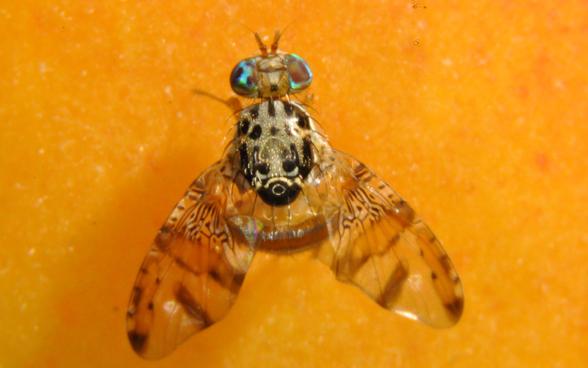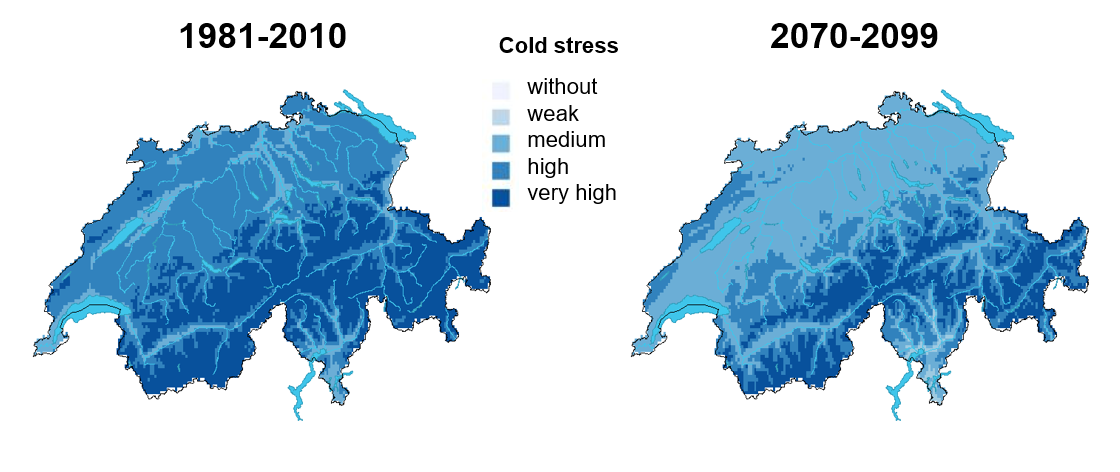The Mediterranean fruit fly Ceratitis capitata (Diptera: Tephritidae) (Figure 1) originally comes from Africa south of the Sahara (Malacrida et al. 2007). During the last 200 years it has been spread to all continents by worldwide fruit trade. It is one of the economically most important fruit pests, nowadays established in Southern Europe. In Central Europe it has been known since the 1930s. However, the species has been introduced again and again, as it is unable to establish persistent populations due to the cool winter climate. EPPO has classified the Mediterranean fruit fly as a quarantine organism, but in Switzerland the species is not a regulated pest.
In total, the larvae feed on over 250 host plants (White and Elson-Harris 1994). In addition to citrus fruits also peach, mango, walnut, apple or pear. The flies have are brightly coloured (White and Elson-Harris 1994). Their face is white, their antennae and trunk yellow. The chest is grey on top and marked with black and yellow spots. The wings are transparent and covered with black and grey markings. A yellow cross-band runs through the middle of the wings, a second yellow band runs parallel to the wing edge. Females lay an average of 300 eggs under the skin of fruits (White and Elson-Harris 1994). The development time of the larvae is strongly dependent on the temperature and is about 10 days at 25°C, so that 7 and more generations can be produced per year (Duyck and Quilici 2002).








